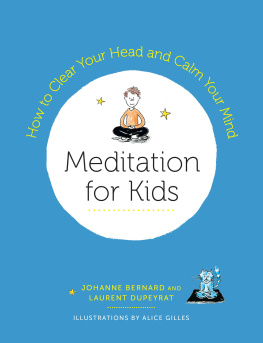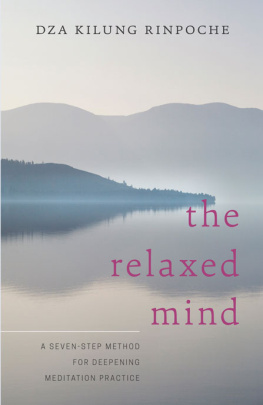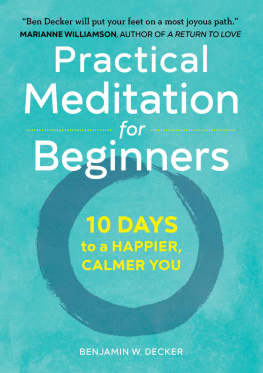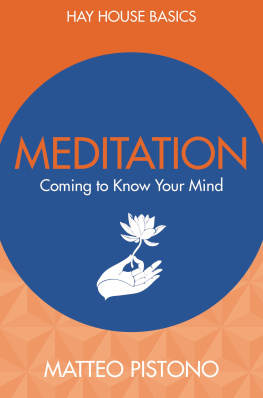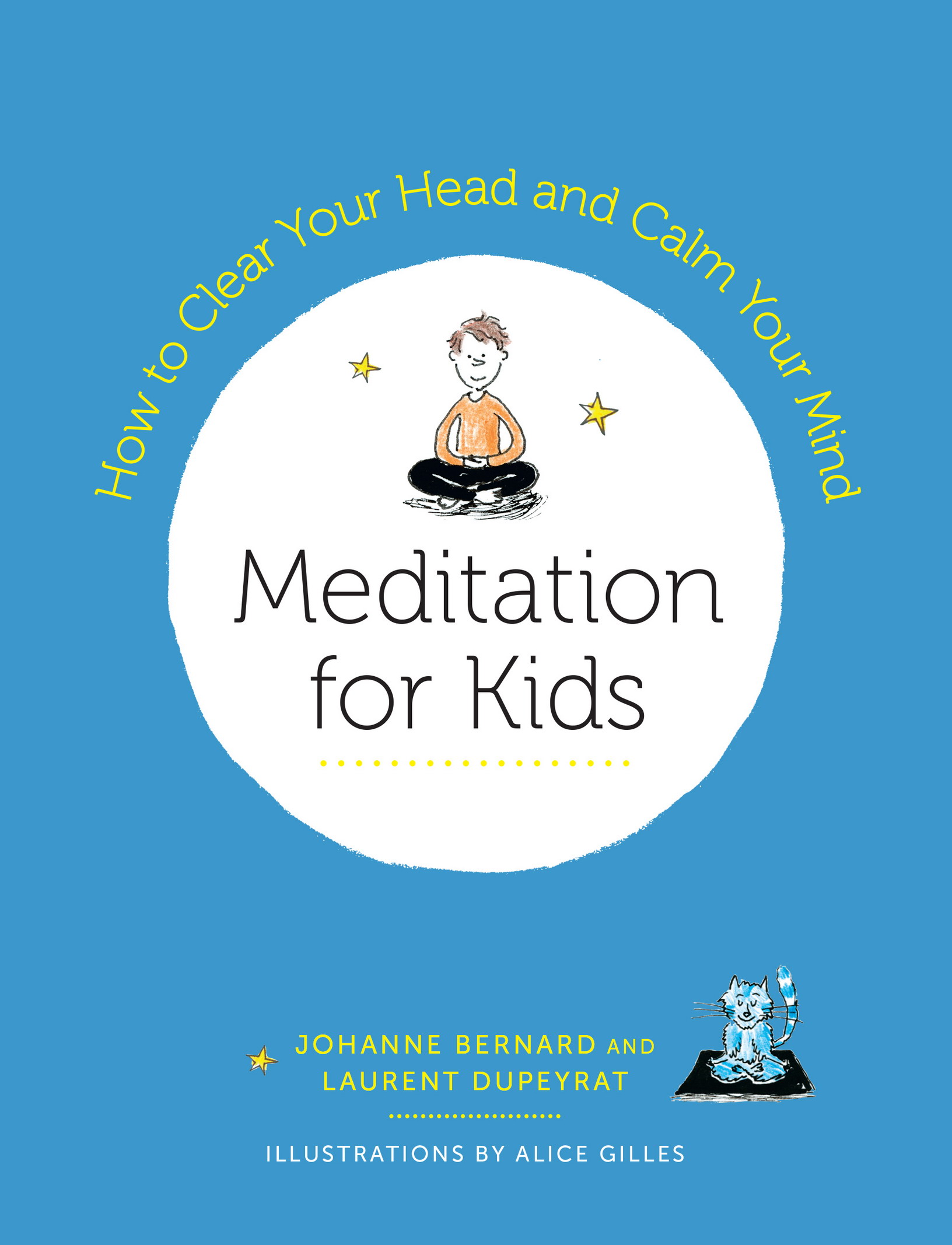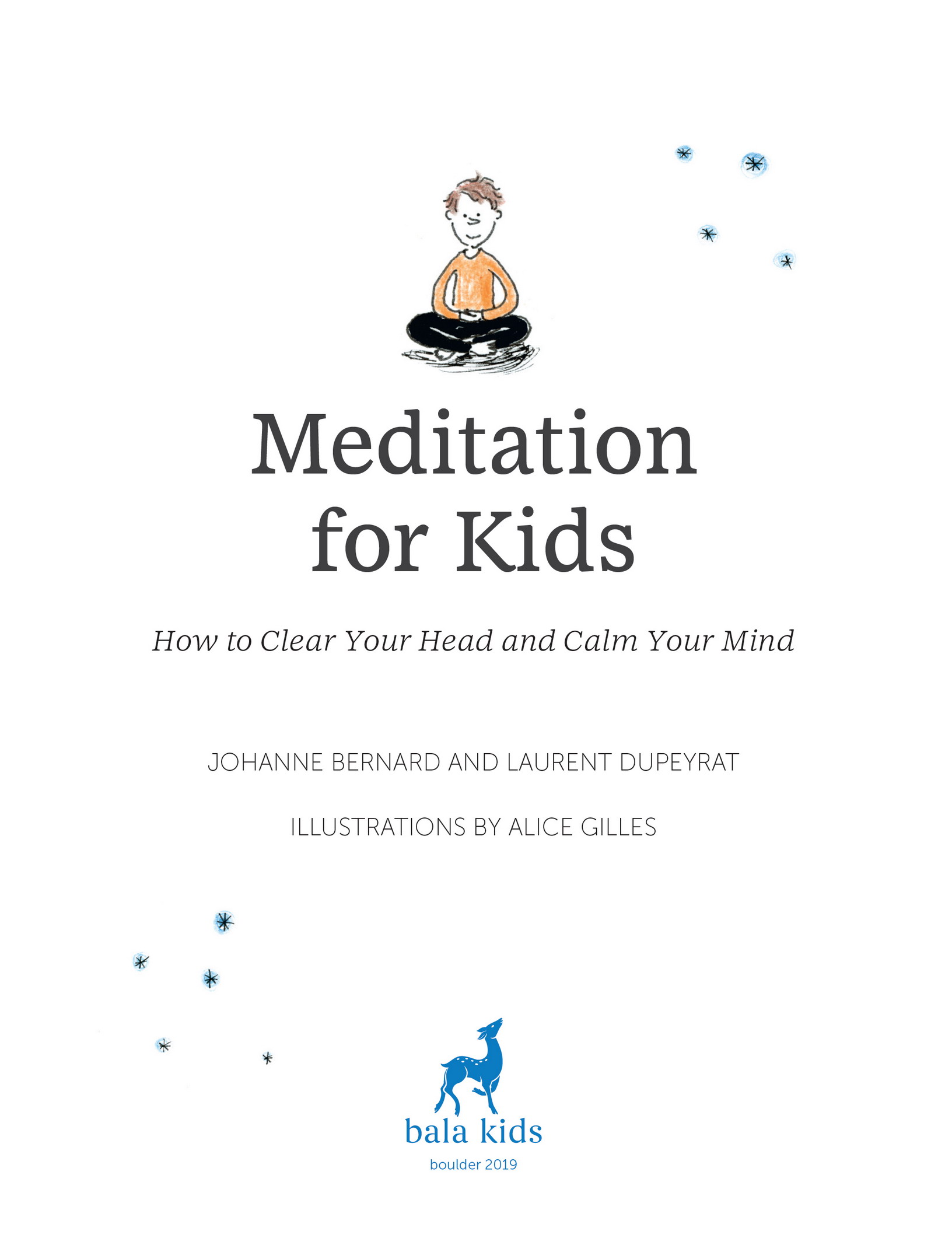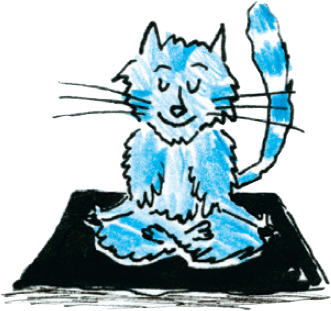Contents
Landmarks
Print Page List
BALA KIDS
An imprint of Shambhala Publications, Inc.
4720 Walnut Street
Boulder, Colorado 80301
www.shambhala.com
Original French text 2016 by ditions de La Martinire, a trademark of the Societ EDLM
English translation 2019 by Shambhala Publications, Inc.
Graphic design by Anne-Marie Bourgeois, m87design.com.
This book was previously published in French as
Jai rendez-vous avec le vent, le soleil et la lune.
All rights reserved. No part of this book may be reproduced in any form or by any means, electronic or mechanical, including photocopying, recording, or by any information storage and retrieval system, without permission in writing from the publisher.
Book design by Liz Quan, adapted for ebook
LIBRARY OF CONGRESS CATALOGING-IN-PUBLICATION DATA
Names: Bernard, Johanne, author. | Gilles, Alice, illustrator.
Title: Meditation for kids: how to clear your head and calm your mind /
Johanne Bernard and Laurent Dupeyrat; illustrations by Alice Gilles.
Other titles: Jai rendez-vous avec le vent, le soleil et la lune. English
Description: First U.S. Edition. | Boulder: Bala Kids, 2019. | Audience: Age 812.
Identifiers: LCCN 2018048579 | ISBN 9781611806205 (pbk.: alk. paper)
Subjects: LCSH: MeditationJuvenile literature.
Classification: LCC BF637.M4 B46813 2019 | DDC 158.1/28dc23
LC record available at https://lccn.loc.gov/2018048579
Ebook ISBN9780834842502
v5.4
a
To all people, big and small,
who practice meditation and keep it alive
Contents
PART ONE:
What Is Meditation?
PART TWO:
Sitting Meditation
PART THREE:
Meditation with Movement
PART FOUR:
Meditation on the Cycles of Nature
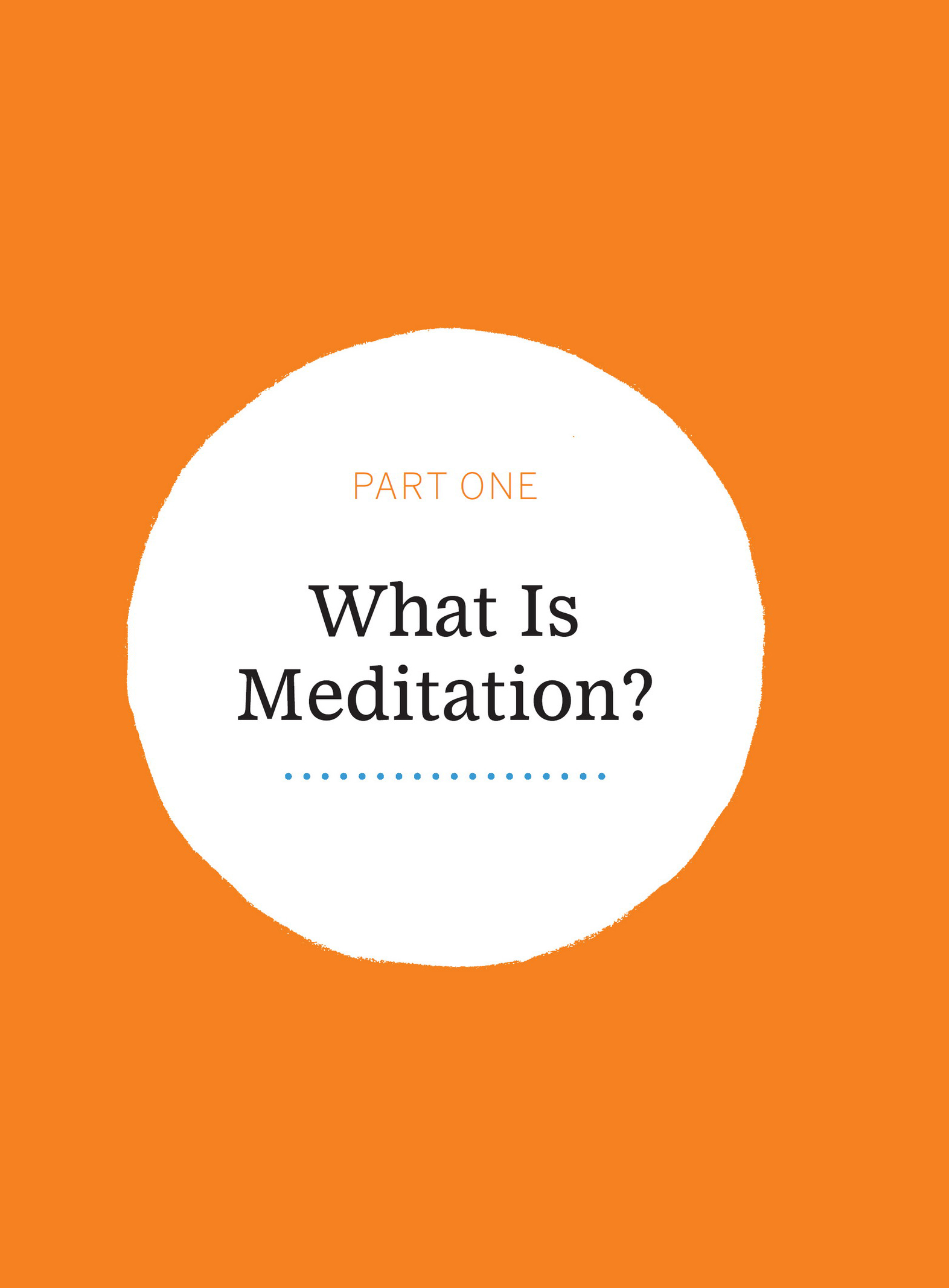

Where Does Meditation Come From?
Meditation is very ancient, so ancient that we do not really know when it first started. But based on the first meditation writings, the Vedas, we can say that the practice of meditation is at least 3,500 years old.

The Vedas come from ancient India. They are sacred teachings that were written down in Sanskrit, one of the oldest languages in the world and still studied today. The word veda means knowledge in Sanskrit.
The practice of meditation is found in almost all religious traditions and looks different in each of those traditions. It may involve concentrating the mind, contemplation, repetitions of sound or verbal expressions, dancing, and so on. The types of meditation we will focus on in this book also come from India and appeared about 2,600 years ago. That was the time that a man known as the Buddha lived and taught. It was from his teachings that Buddhism was born. And we will be following in his footsteps.

Conditions have changed a lot since the time of the Buddha. Meditation has spread far and wide across the world, but it has never lost its roots. Today, it is still possible to practice meditation as it was practiced in the time of the Buddha.

Traditionally, meditation is often practiced in groups (for instance, by monks or nuns in monasteries). But some people, such as renunciates, have practiced meditation by withdrawing from everyday life. For instance, in the past some Christian ascetics, the stylites, meditated their whole lives on the top of stone pillars without ever coming down! Renunciates called yogis, who follow the example of the Buddha, sometimes practice alone in forests or in the mountains or in caves. There are still many yogis today, some meditating deep in Himalayan forests, some on the banks of the Ganges, the most sacred river in India, and some even in cities. But for many of us, there is no need to go find caves or monasteries to meditate in. All we need is a nice place to sit. And there is also no need for us to choose whether to meditate alone or with other peoplewe can do both!
Who Was the Buddha?
Meditation is an important practice of Buddhism, which is both a religion and a philosophy, inspired by the teachings of the Buddha. Buddha (which means awakened one) was born in the sixth century B.C.E. But before he was the Buddha, he was called Siddhartha Gautama, which means he who reaches his goal.
Siddhartha Gautama was the prince of a small kingdom in the north of India, near the border with Nepal. Like all princes, Siddhartha was supposed to succeed his father, King Suddhodana. He was kept secluded within the palace and knew nothing of the miseries of the world. It was not until he was thirty years old that he managed to leave the palace. It was then that he discovered for the first time the existence of old age, sickness, and death. This was a big shock for the prince. How was it possible for suffering like this to exist? More than anything, the prince wanted to find an answer to this question, so Siddhartha left the palace and his wife and child and went off alone into the forest to meditate on himself and on the world. He was determined to find out what the origin of suffering was and how to put an end to it. For more than six years, Siddhartha lived in the forest far from everything, hardly eating. He observed his mind and tried to understand how it worked: Why did he think? Why did he have sensations, emotions? Why was he happy or unhappy?
After years of training in this way, he finally succeeded in discovering some profound answers to some of these questions, but he still was unable to find the answer to his main question. So, he decided to leave the forest and sit at the base of a certain fig tree in the meditation posture known as the lotus position, and he vowed not to get up from that spot until he had discovered the true root of sufferings. Under this tree, the Bodhi Tree, in the north of India, Siddhartha attained enlightenmentwhich is another way of saying that he discovered the true nature of all things. It was at this moment that the prince became the Buddha, or the Awakened One. The Buddha went on to devote his whole life to teaching what he had learned through meditation: the path to enlightenment, the end of all suffering. He passed away at the age of eighty.

